Fruits that start with M are a large category that includes both mainstream and exotic fruits. These options come in many varieties, from tropical to temperate, from sweet to sour, from green to red and other colors.
Everybody knows about household names like mangoes and melons, but how about melon pears and mangrove apples? Stick around, and I will give you names that make your friends’ jaws drop!
You’re going to learn about the most exciting 26 fruits whose names start with M. Many of them are wonderful M-named foods that have great culinary applications.
Next, I will also give you a bonus section on notable M-named vegetables.
26 Magnificent Fruits That Start With M With Filter
26 magnificent fruits that start with M are waiting for you to discover. You will gain more useful information by using my interactive filters, which include national fruits, fruits for dishes, fruits for beverages, fruits for garnish, and exotic fruits.
Mango
- Haiti
- India
- Pakistan
- Philippines
- For Beverages
- For Dishes
- For Garnish
- National
Mango is a popular stone fruit that hails from South Asia, especially in India. It grows predominantly in tropical climates and has a peak season during the summer months.
The main characteristics of mangoes are their vibrant yellow-orange flesh, green, yellow, or red skin, and sweet, rich taste with a hint of tartness. For eating, the fruit can be sliced, and the flesh scooped away from the skin and pit.
In culinary uses, mangoes can appear in various dishes and beverages, such as fruit salads, salsas, smoothies, fruit juices, and puddings.
Many of the world’s biggest mango-producing countries are in South Asia and Southeast Asia, namely India, Pakistan, the Philippines, Thailand, and Indonesia. Interestingly, India accounts for half the global mango production.
Melon
- Turkmenistan
- For Beverages
- For Dishes
- National
Melon is among the most famous berry fruits in the world. Originating in Southwest Asia in times out of mind, it has evolved into numerous varieties, such as watermelons, cantaloupes, honeydews, canary melons, muskmelons, and more.
Due to such diversity, melons can come in many shapes, sizes, and colors. Still, they typically have a round or elongated shape with a hard green or yellow rind and juicy, sweet flesh that ranges from pink to green in color.
Melons thrive in warm weather, and many Asian countries are significant melon producers. Well-known names are China, Turkey, India, and Kazakhstan.
Mulberry
- For Beverages
- For Dishes
Mulberry is a classic example of aggregate fruits, which are formed from many ovaries around a single flower. There are three main kinds of mulberries with different characteristics: red, white, and black mulberries.
White mulberries have been cultivated in China since ancient times because the leaves are the main food for silkworms. Black mulberries originated in West Asia, while the red variety is native to North America.
All mulberries are juicy and have a deep sweetness tinged with some tartness, but black mulberries are generally considered to be tastier. Their season often occurs in spring and summer.
The mulberry tree is a common feature of temperate regions around the world. Dried and fresh mulberries are delicious snacks and garnishes for desserts.
Mandarin
- For Beverages
- For Dishes
- For Garnish
Mandarin, also known as mandarin oranges or mandarin, is a citrus fruit originating in China and parts of Southeast Asia. Some other citrus fruits, such as tangerines and clementines, are considered specific types of mandarins.
The skin of a mandarin boasts a bright orange hue and is thinner and looser than that of other oranges, making it easy to peel. The juicy pulp inside is segmented and imbued with a sweet and mildly tart flavor.
With their aromatic qualities, mandarins aren’t only suitable for raw consumption but also for imparting a refreshing citrus taste to salads, desserts, jams, sweets, and juices.
Have you ever wondered why it is called the mandarin orange? When this citrus fruit was introduced to the West, Westerners took notice of its Chinese origin and called it “mandarins” as a reference to former imperial Chinese civil officials.
Meyer Lemon
- For Beverages
- For Garnish
Meyer lemon is a hybrid citrus fruit with a long history in China. However, it was named after Frank Nicholas Meyer, who introduced it to the US in 1908.
Despite its name, the Meyer lemon is actually a cross between the citron and a mandarin or pomelo variety that is extinct today. Its season lasts from late winter to spring.
Meyer lemons are smaller and rounder than regular lemons, with a smooth, thin skin that turns a deep yellow when ripe. Still, this citrus fruit can be used as a lemon substitute in beverages, desserts, and marinades.
Besides culinary uses, Meyer lemons also make excellent ornamental trees.
Mangosteen
- Thailand
- Exotic
- For Beverages
- For Dishes
- For Garnish
- National
Mangosteen is an exotic tropical fruit originating from Southeast Asia. It has a thick, purple rind encasing a few white arils (pulp segments) that offers a mouth-watering blend of sweetness and tanginess, not to mention the floral aromas.
People often refer to the mangosteen as the “queen of fruits” in recognition of its exquisite flavors. However, legend has it that Queen Victoria Britain once offered a knighthood to anyone who could deliver her a fresh mangosteen, hence the connection between the fruit and queens.
Mangosteens are best enjoyed fresh by removing the inedible rind and scooping out or biting the flesh. Southeast Asia is the main mangosteen-producing region in the world, though some South Asian countries also cultivate it.
Macadamia Fruit
- Exotic
- For Dishes
- For Garnish
Macadamia fruit is a type of native Australian fruit that is mainly cultivated for its valuable nuts. These nuts were historically a staple in the diet of Indigenous Australians before gaining popularity worldwide.
Also known as Queensland nut or bush nut, macadamia grows in tropical areas. Since the late 19th century, this tree has been brought to many regions with compatible climates; in fact, South Africa, rather than Australia, is now the biggest supplier of macadamia fruits worldwide.
Each macadamia fruit consists of an incredibly tough brown shell and a creamy white kernel with a rich, buttery taste. Macadamia nuts are widely used in confectionery, baking, and making macadamia oil, a luxurious cooking oil with a high smoke point.
Mamey Sapote
- Cuba
- Exotic
- For Beverages
- For Dishes
- National
Mamey sapote, or simply sapote, is an orange-fleshed fruit native to the tropical Caribbean and Central America. It has been a part of Indigenous diets long before European colonization.
A typically mamey sapote sports a rough, russet brown outer skin and sweet, creamy flesh inside. Try this tender goodness, and you will be reminded of mashed sweet potatoes mixed with cooked pumpkins and cherries.
Mamey sapotes are ideal for eating fresh, making smoothies, whipping up ice cream, and preparing rich desserts. Mexico and Florida (the US) are famous for their mamey sapote production.
Malay Apple
- For Beverages
- For Dishes
Malay apple, also known as Malay rose apple, rose apple, mountain apple, and plum rose, is a tropical fruit native to Southeast Asia. Through trade and fruit exchange, it has been cultivated in many other regions, such as Oceania, the Caribbean, Central America, and Hawaii (the US).
Available in pink, deep red, and even white, Malay apples have a shiny, bell-shaped appearance. Their flesh is crisp, watery, and sweet with a floral undertone.
Malay apples have a similar appearance and flavor profile to wax apples and water apples, which are also well-known fruits in Southeast Asia.
People often enjoy Malay apples in their raw form or use them in syrup and jam. Did you know that Malay apple trees were considered sacred in Polynesian cultures?
Miracle Fruit
- Exotic
- For Beverages
- For Dishes
Miracle fruit, also known as miracle berry or sweet berry, is a small red fruit hailing from West Africa. Its intriguing name comes from its unique ability to temporarily alter taste perceptions, making sour foods taste sweet due to a protein called miraculin.
Flavor-wise, miracle fruits are quite mild, but once you eat them fresh and let the juicy pulp coat your mouth, their magic will be unleashed. Beyond West Africa, this miraculous fruit is also cultivated in many tropical regions, such as Florida.
The effect of the miracle fruit is more than just a simple culinary trick. Many cancer and diabetes patients consume miracle fruit to regain their appetites, which are often diminished by treatments.
Maqui
- Exotic
- For Beverages
- For Dishes
Maqui, also known as Chilean wineberry, is a small berry fruit growing in the wilderness of South America, especially in Chile and Argentina. It has long been popular with the indigenous Mapuche people.
Nowadays, health-conscious individuals are becoming more and more interested in maqui. The berries sport a deep purple color, which indicates high levels of antioxidants and vitamins.
Fresh maqui berries have a tart, sweet flavor suitable for fresh consumption, but they are also consumed in powdered form or added to smoothies, juices, or dietary supplements. The Mapuche have maqui-based dishes and beverages that boost strength and endurance.
Mamey Apple
- Exotic
- For Beverages
- For Dishes
Mamey apple, also known as mammee apple, tropical apricot, or just mamey, is a tropical fruit steeped in the history of the indigenous people in the Caribbean and Central America.
Mamey apples are easily recognizable by their bright red-orange skin and similarly colored flesh. Depending on the varieties and ripeness, the flesh can be juicy, tender, firm, or crispy.
In terms of flavors, mamey apples deliver a sweet flavor similar to almonds or apricots, hence the alternative name. Eating them fresh is the most common way, though blending them into smoothies is another great idea.
Marula
- Exotic
- For Beverages
- For Dishes
Marula is a juice fruit indigenous to the woodlands and frost-free regions of Africa. It plays an important role in African life, from economic livelihoods to folklore and traditional ceremonies.
Beneath the leathery, yellow skin of marula is juicy, white flesh surrounding a hard, inner oil-rich kernel. Mmarula has a tart and slightly nutty flavor.
The exotic African fruit can be eaten fresh or fermented to make traditional beer. Marula kernels are usually pressed for marula oil, a prized product for skin care.
The marula season is brief and only occurs in the summer, which lasts from January to March in Africa. During this time, numerous people in rural areas rely on harvesting the fruit as a vital source of income.
Interestingly, humans are not the only species that have a claim on marula. Many African animals live on this fruit, namely elephants, giraffes, and rhinoceros; that wildlife gets drunk after eating fermented marula is a popular yet ultimately unfounded anecdote.
Medlar
- Exotic
- For Dishes
Medlar is a brown pome fruit with roots that trace back to ancient southeastern Europe and central Asia. Its alternative names are common medlar, open-arse, and monkey’s bottom; these unusual names result from its interesting appearance.
Medlars are harvested in late autumn but are only edible after bletting, a process in which people store the fruits in a cool, dry place to let them soften and ripen. With soft, sweet, caramel-flavored flesh, medlars are great for eating fresh or making jellies, wines, and desserts.
Due to their quirky names and ripening process, medlars appeared in numerous medieval literary works as symbols of lust, moral decay, impatience, and transformation.
Mamoncillo
- Exotic
- For Beverages
- For Garnish
Mamoncillo is another name for quenepa, Spanish lime, and guinep, which is a summer fruit indigenous to tropical America, especially the Caribbean and South America.
Each mamoncillo fruit is encased in a thin, green skin. Upon peeling it, you will notice juicy orange flesh around a large seed, giving off a wine-like smell and a mix of sweetness, tartness, and bitterness.
Locals usually eat mamoncillos raw by sucking the flesh from the seed. They also incorporate them into beverages.
Mora de Castilla
- Exotic
- For Beverages
- For Dishes
Mora de Castilla, also known as Andean raspberry, is a succulent fruit found throughout Latin America, usually in tropical highland regions. It is classified as a type of blackberry.
In terms of appearance, mora de Castilla strongly resembles the common blackberry but with a bigger size, featuring a dark purple to black color. Its taste is very sweet and a little sour, which comes with floral aromas.
Those traits make mora de Castilla an ideal ingredient for beverages, cocktails, and baked goods when you don’t want to consume this fruit raw.
Manila Tamarind
- Exotic
- For Beverages
- For Dishes
Manila tamarind, also known as monkeypod tree or Madras thorn, is a tropical fruit of Mexican and Central American origin. It has spread to many tropical regions, such as South Asia and Southeast Asia, and has been considered an invasive species in some.
The Manila tamarind tree was historically used for shade and ornamentation before people discovered the culinary uses for its fruits. As a member of the legume family, the fruit has a pod-like structure.
The white or pinkish pulp inside the brittle shell has a musky, sweet, and sour taste reminiscent of tamarind. Feel free to use this part for raw consumption or flavor beverages and desserts with it.
Marang
- Exotic
- For Dishes
Marang is a Filipino tropical fruit closely related to jackfruit and breadfruit. Its main season takes place between September and October, with additional fruiting in December.
A normal marang consists of a green or yellowish spiky exterior and sweet, creamy white bulbs. Each bulb has a hard seed and offers an unforgettable flavor likened to a mix of ripe bananas and jackfruits.
Since marang is only cultivated in a few regions and has a limited shelf life, it is always a rare find outside the Philippines. Locals rarely use marang in cooking as its exquisite flavor and texture are best enjoyed fresh.
Moriche Palm
- Exotic
- For Beverages
- For Dishes
Moriche palm, also known as aguaje or buriti, is an exotic fruit from a palm tree of the same name indigenous to South America. It grows in clusters, each oval-shaped fruit about 2 inches in length and diameter.
Each Moriche palm fruit has a bright red or deep brown scaly skin that covers orange flesh. With a bitter, tart, and sweet taste, the flesh can be eaten raw or made into juices, jams, desserts, and moisturizing oil.
Locals mainly harvest moriche palm from December to June, around the wet season, when the fruits are at their most abundant.
Mango Plum
- Exotic
- For Beverages
- For Dishes
Mango plum, also known as gandaria, plum mango, or Marian plum, is a tropical fruit found in several Southeast Asian countries, namely Thailand, Indonesia, Malaysia, and Myanmar.
Young mango plums are green and crunchy, while mature ones showcase an orange or yellow hue and a juicy texture. In both stages, however, the fruits are sour and piquant, like unripe mangoes.
Therefore, people in Southeast Asia usually serve raw mango plums with condiments, like a mix of salt and chili pepper, or use them in making beverages, pickles, and jams. Green mango plums with a crunchy texture are a great addition to fruit salads.
Mountain Soursop
- Exotic
- For Beverages
- For Dishes
Mountain soursop, also known as mountain sop and wild soursop, is a Caribbean, Central American, and Amazonian tropical fruit. It is related and highly similar in appearance to the more widely known soursop, hence the name.
Once you remove the spiky green exterior, you can taste the soft, juicy, aromatic flesh inside. Its taste is mildly sweet and stimulatingly acidic, with citrusy undertones.
Melon Pear
- Exotic
- For Beverages
Melon pear is a nightshade fruit native to the Andes mountains of South America. It has many other names, including pepino dulce (literally “sweet cucumber”), pepino, and pepino melon.
While melon pears are in the same family as cucumbers and tomatoes, they resemble melons in shape and both melons and pears in taste, hence the name. Beneath the smooth yellow skin streaked with purple is light yellow or white flesh with a firm texture and mild and sweet flavors.
Besides raw consumption, you can also add melon pears to salads and desserts
Mangrove Apple
- Exotic
- For Dishes
Mangrove apple is a tropical fruit available in the saline coastal waters in many parts of South Asia, Southeast Asia, and Northern Australia.
Mangrove apples have a round shape, greenish-red skin, and a spongy, fibrous interior that helps them float on the water. With a pronounced sourness, these fruits aren’t often eaten raw but rather pickled or used as a flavoring in chutneys, curries, and stews.
Interestingly, mangrove apple flowers are pollinated by bats, and their fruits provide food for many marine wildlife.
Monkey Jack
- Exotic
- For Dishes
Monkey jack, also known as monkey fruit, is an exotic fruit in the jackfruit family. Native to Southeast Asia and South Asia, it is a feature of many local rainforests and a source of food for monkeys, hence the name.
Monkey fruits boast a spiky exterior and a fibrous, tangy flesh that is more acidic and less sweet than jackfruits. These fruits are suitable for both raw consumption and cooking.
Mangaba
- Exotic
- For Beverages
Mangaba is a tropical fruit endemic to Brazil, where it has been harvested for countless generations. Its season occurs in late summer and fall.
Appearance-wise, mangaba has smooth, thin skin in shades of green or yellowish and creamy white pulp. Its taste is a mix of sweetness and sourness, which shines in juices, ice creams, and, of course, fresh mangaba.
Mock Strawberry
- Exotic
Mock strawberry, also known as false strawberry or backyard strawberry, is a weedy plant producing red strawberry-like fruits. Hailing from the eastern and southern parts of Asia, it was brought to the US as an ornamental plant and a ground cover.
Despite their stunning appearance, mock strawberries are water and bland, lacking the juiciness and sweetness of real strawberries. As a result, this plant is more suitable for ornamental rather than culinary purposes.
Since fruits and vegetables both play an important role in many meals, learning about one thing will help you understand the other better. Therefore, I will introduce a few famous M-something vegetables next.
Since fruits and vegetables both play an important role in many meals, learning about one thing will help you understand the other better. Therefore, I will introduce a few famous M-something vegetables next.
What Are Popular Vegetables That Start With M?
Continue reading to explore the best vegetables that start with M; I promise they are useful for your diet in many ways.
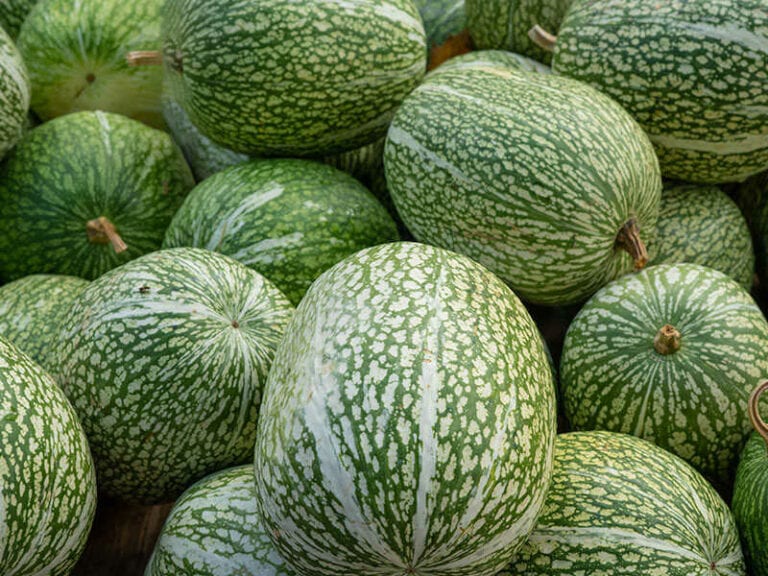
Malabar Gourd
Malabar gourd is a medium-sized squash variety that is available in many regions around the world. Though it is technically a kind of fruit, people mainly consume the Malabar ground as a vegetable.
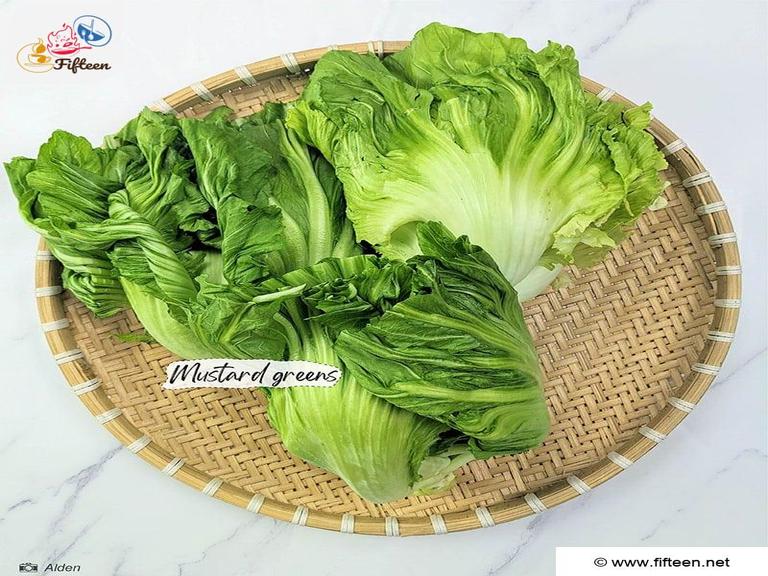
Mustard Greens
Mustard greens are a type of leafy vegetable with a peppery flavor. They have many alternative names, such as Chinese mustard, brown mustard, or leaf mustard.
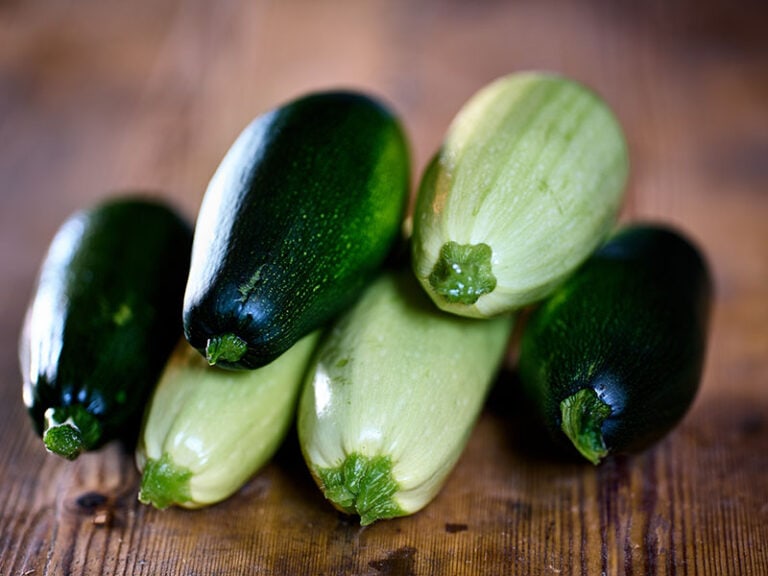
Marrow
Marrow is a generic name for a courgette or a full-sized zucchini. It is a versatile fruit vegetable that is used in many different dishes.
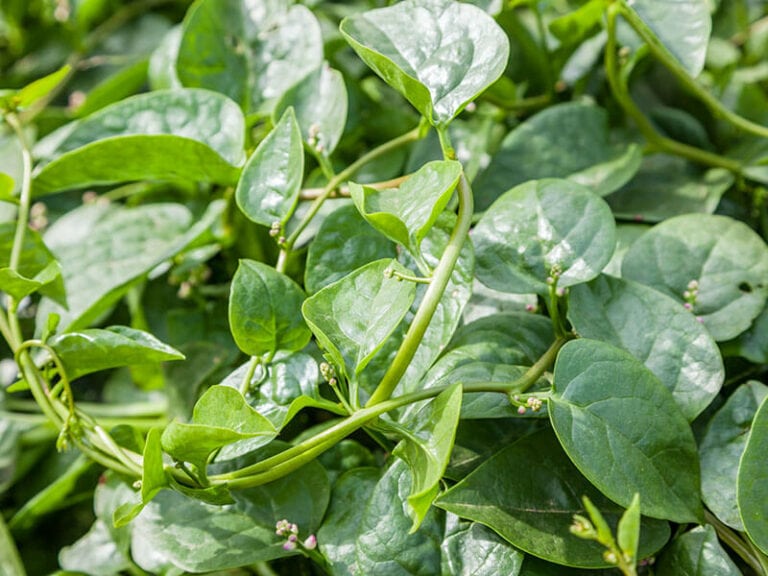
Malabar Spinach
Malabar spinach is a leafy vegetable with many other names, like vine spinach, Ceylon spinach, and Indian spinach. Though unrelated to actual spinach, it has a comparable flavor.
The options above are relatively popular in the US and other countries. Check out the full list of M-something vegetables for more exotic vegetables.
Back to the topic of fruits, what do you think about my recommendations? I’m all ears for new suggestions, so let me know your feedback in the comment section.
Before you’re off to discover other interesting fruits, don’t forget to share this list of fruits that start with M with your friends!


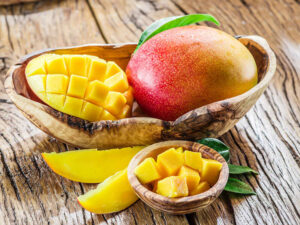
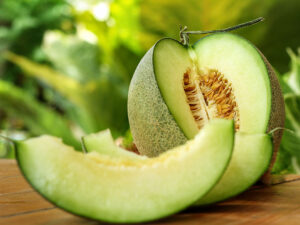
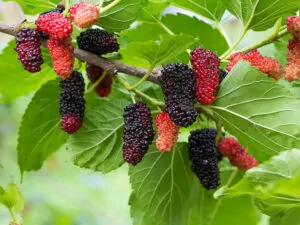
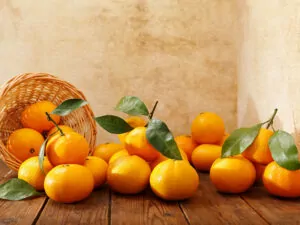

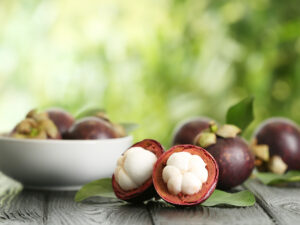
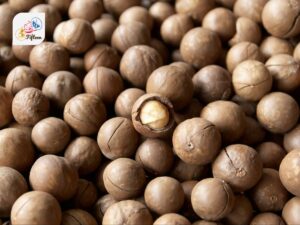
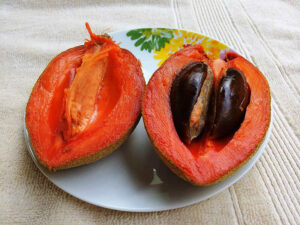
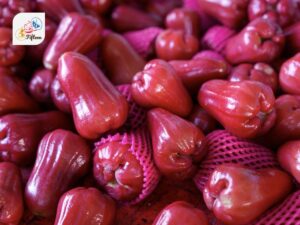
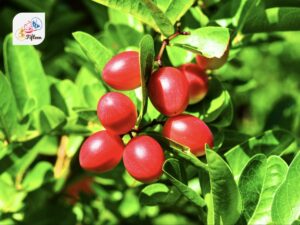
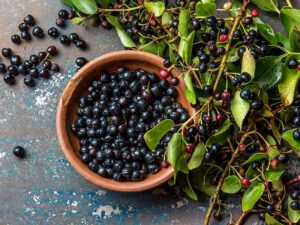
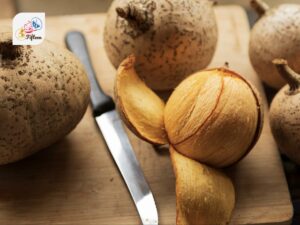
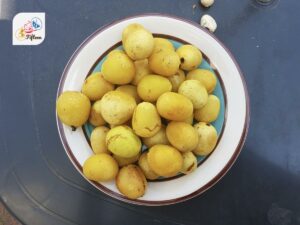
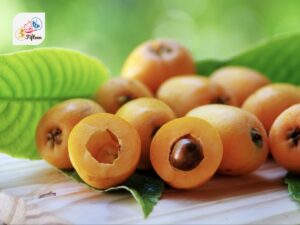
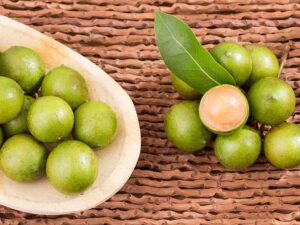
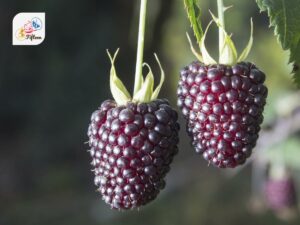
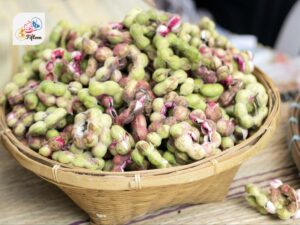
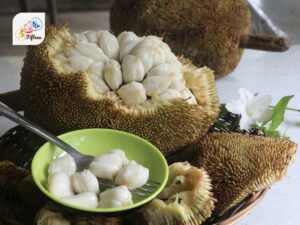
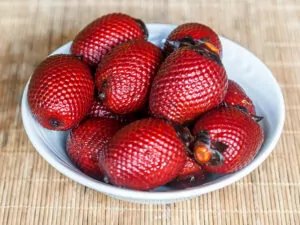
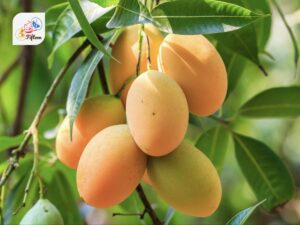
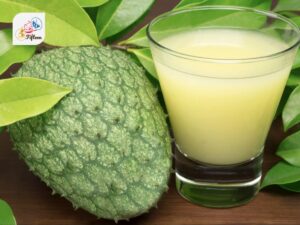
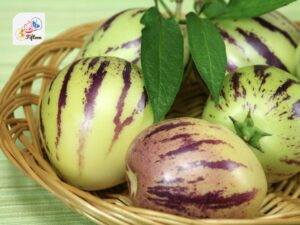
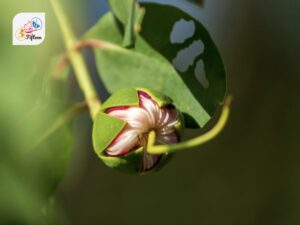
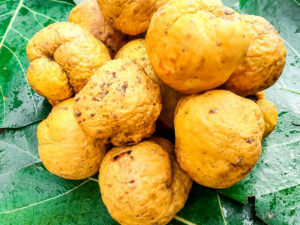
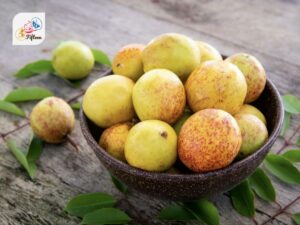
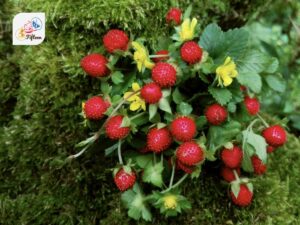
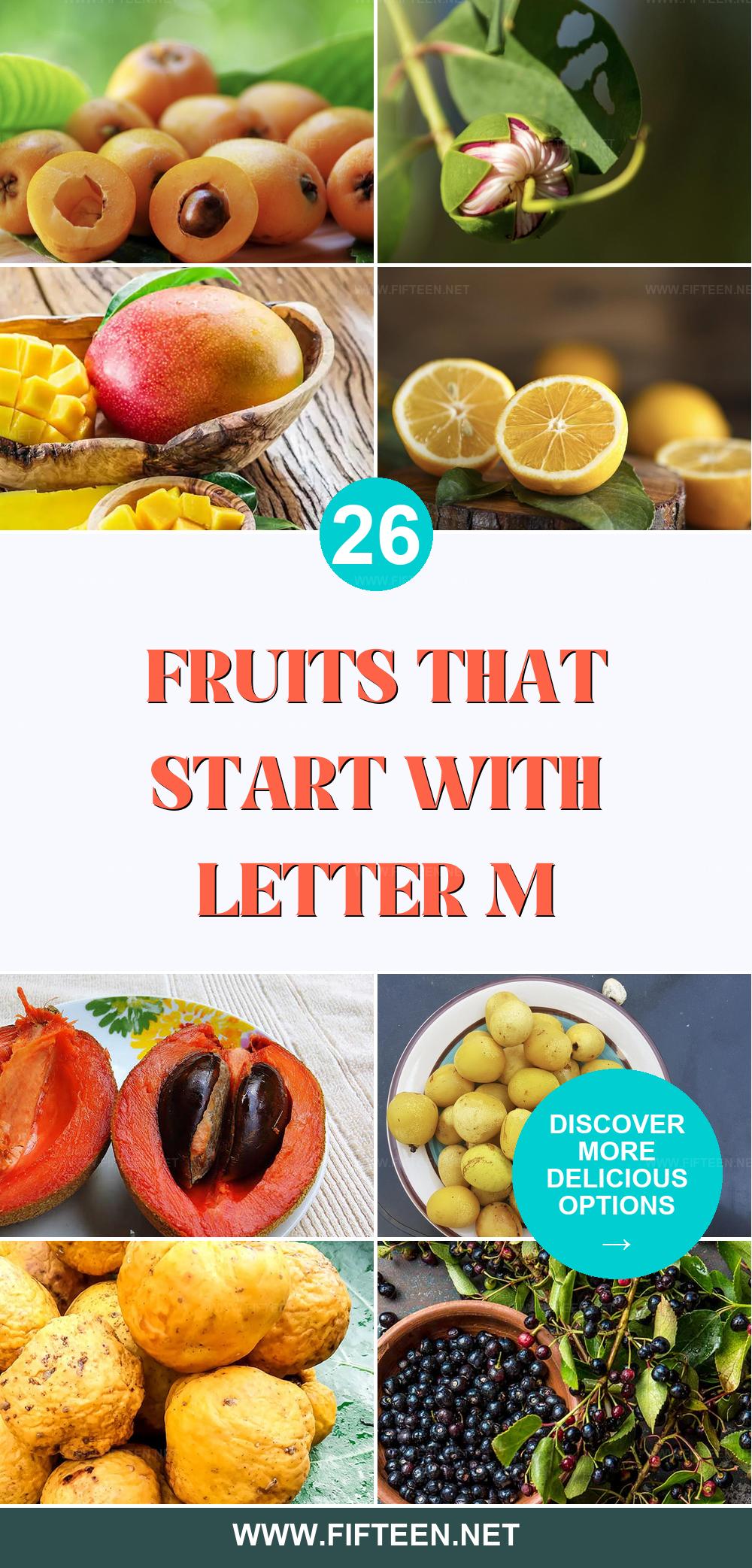
Jamie Scott
Editor in Chief, Senior Content Writer
Expertise
Home Cooking, Meal Planning, Recipe Development, Baking and Pastry, Food Editor, Cooking-video Maker, Western Food Evaluation Expert
Education
Le Cordon Bleu College of Culinary Arts
Local Community College, New York, NY
Jamie Scott is a skilled culinary expert and content creator specializing in Western cuisine. With over 15 years in the culinary field and formal training from Le Cordon Bleu, Paris, Jamie deeply understands how to blend nutrition with delicious flavors. His passion for cooking matches his commitment to making healthy eating accessible and enjoyable.
On Fifteen.net, Jamie brings a fresh perspective to classic dishes and beverages, offering readers insightful recipes, cooking tips, and a fresh view on meal planning that emphasizes taste, health, and simplicity.